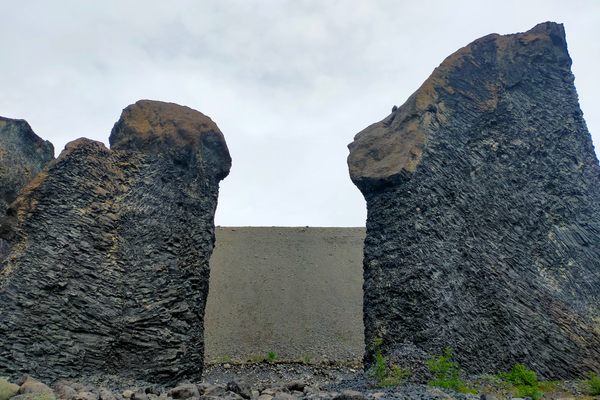Heinabergslón is a glacial lagoon within Vatnajökull National Park. Vatnajökull Park covers approximately 14 percent of Iceland and consists of a stunning mixture of majestic mountains, active volcanoes, massive glaciers, and mesmerizing lagoons.
Heinabergslón Lagoon is fed from the Heinabergsjokull glacier, which is part of the larger Vatnajökull ice cap. When the water melts, it pools in lagoons, such as Heinabergslón. Because of the tumultuous geology of this region, the melting water often carries volcanic dust, making the water in these basins quite murky. However, Heinabergslón is more than 330 feet deep, enabling the detritus to sit at the bottom of the lagoon, leaving the water at the surface crystal clear.
Heinabergslón is a mere 23 miles from the much more famous Jökulsárlón, but a few differences set these two lagoons apart. Namely, Heinabergslón is far less frequented than the more famous Jokulsarlon.
The most important difference is the temperature of the water. The water in Jökulsárlón Lagoon is usually warmer because the lagoon is ocean-fed, so icebergs melt from the bottom. As the lower part of the iceberg is melting, the upper part becomes heavier, and the iceberg will eventually tip over–needless to say, this is very dangerous.
Conversely, in Heinabergslón the water is colder because the water is entirely glacial-fed, so icebergs melt from the top down. This does not mean that the icebergs in Heinabergslón do not tip over–it just means that they are less likely to do so. It is said that an expert eye can predict with some degree of certitude if an iceberg is likely to tip over–when it will do so is a different issue altogether.
The second difference is that a generous opening in the Jokulsarlon Lagoon enables the water to flow to the sea. In fact, the flow is sufficiently strong to create a spectacular “traffic jam” of icebergs. Combined with the temperature of the lagoon, it means that the icebergs here are very mobile.
The same is not true regarding Heinabergslón, which has a diminutive brook whose trickle does not bother the icebergs. This, and the temperature of the water make this lagoon a safe location for kayaking, an eco-friendly way of appreciating icebergs at close range.
Both Heinabergslón and Jökulsárlón are threatened by climate change and our warming planet. In the new book The Secret Lives of Glaciers, glaciologist M. Jackson estimates that Iceland’s glaciers will shrink by a least a quarter of their current volume in the next 50 years. And already several glaciers have disappeared from Iceland.
As a bonus, it is possible to see seals in the lagoon and reindeer in the surrounding area.
Know Before You Go
The route to Heinabergslón cuts through rough patches of off-road with no signage. Several companies offer kayaking in this lagoon, and they provide transport from the paved road. If the weather is accommodating, it is also possible to walk on the glacier if the appropriate gear is available, but this should be done only under the monitoring of a local guide.

















Follow us on Twitter to get the latest on the world's hidden wonders.
Like us on Facebook to get the latest on the world's hidden wonders.
Follow us on Twitter Like us on Facebook